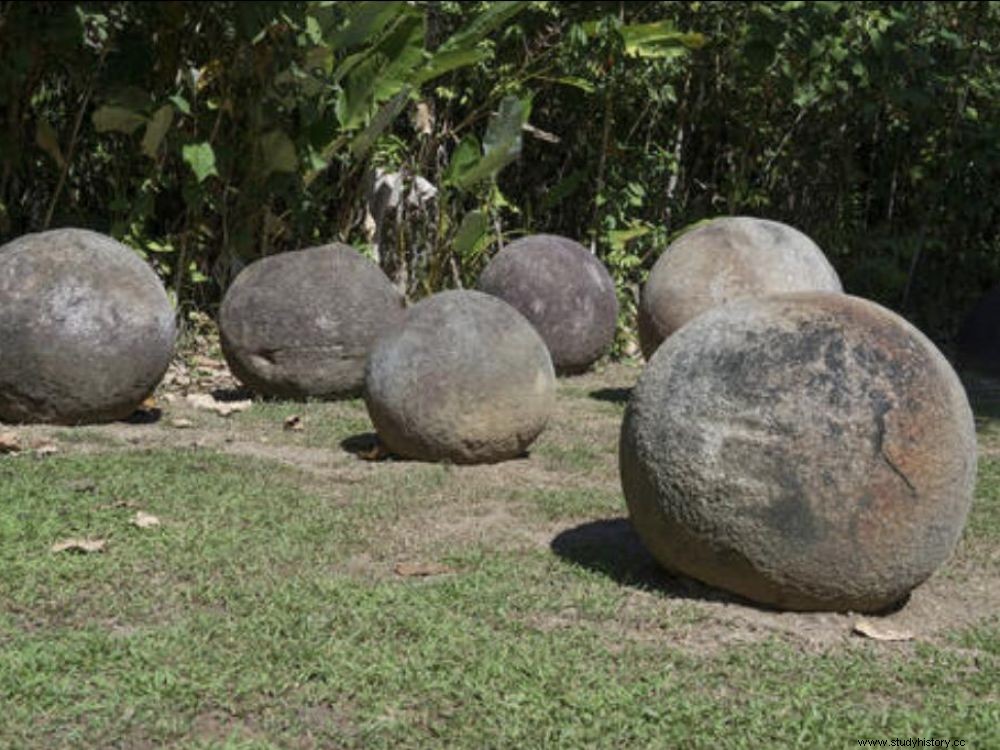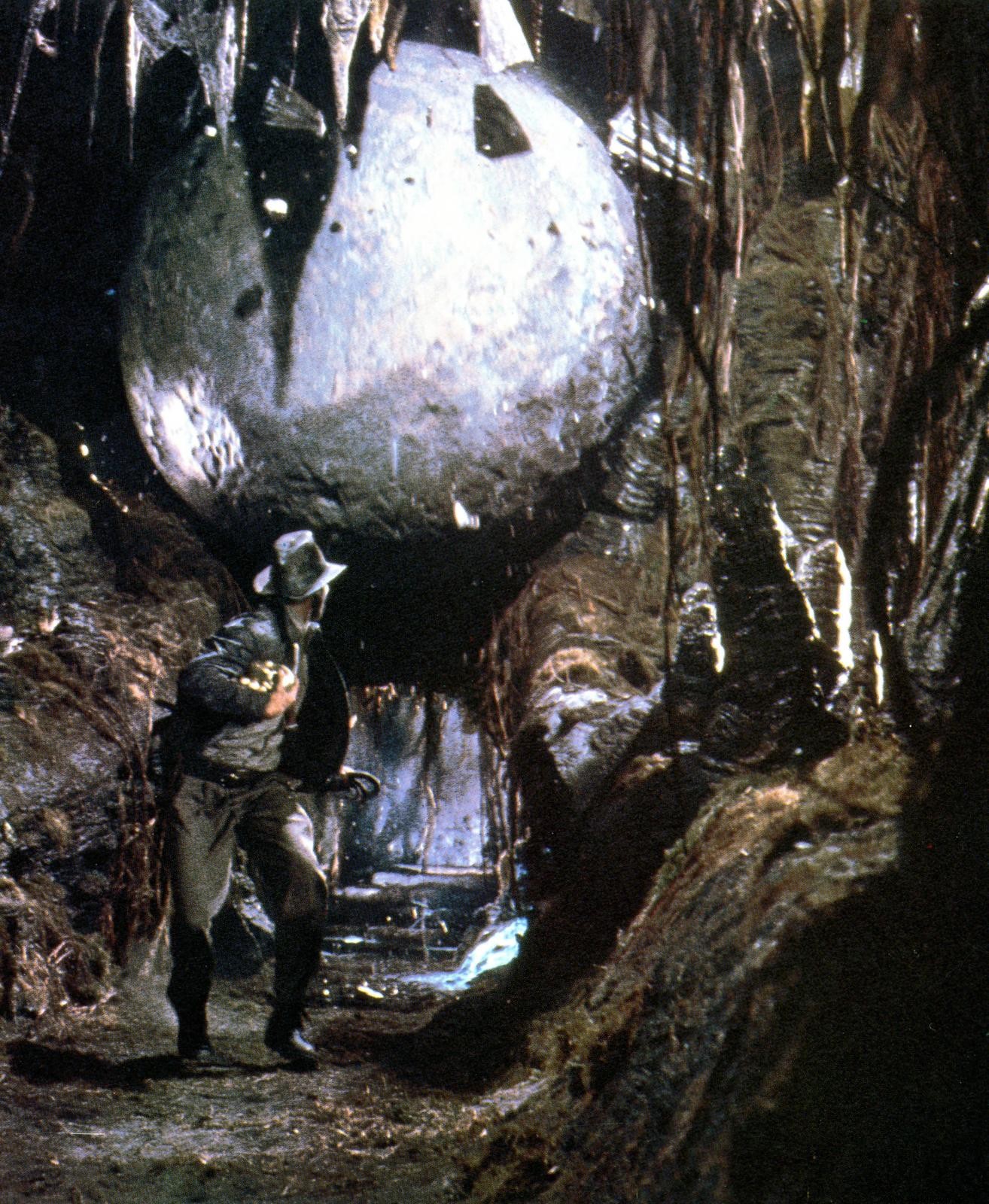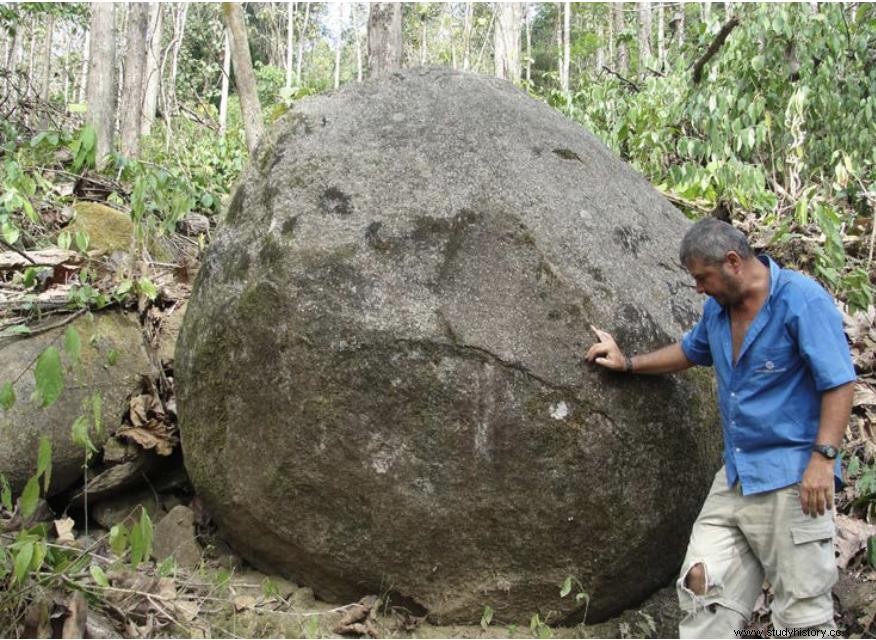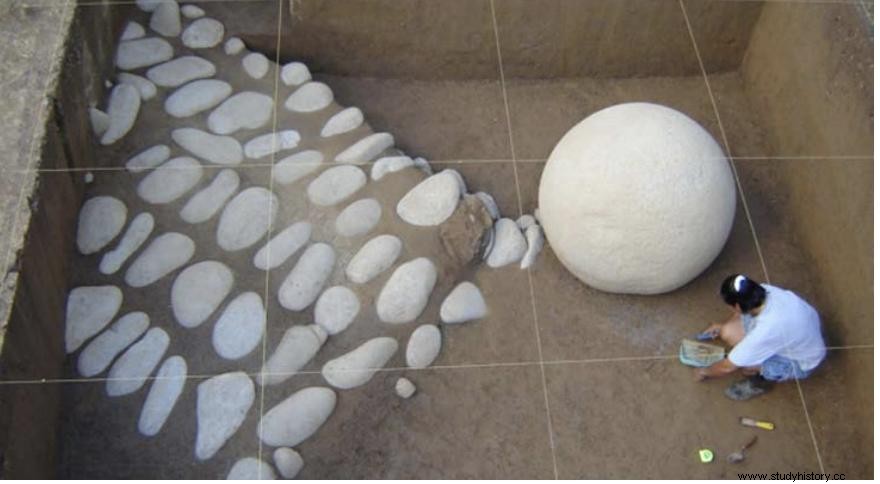Unique in the world, the spherical stones of Costa Rica intrigue researchers. The recent discovery of two of them will perhaps help to better solve their enigma by offering more precise datings.

Pre-Columbian megalithic spheres from Diquis, Costa Rica.
In the famous blockbuster "Raiders of the Lost Ark " (1981), the hero of the film Indiana Jones is pursued by an enormous ball of stone ready to tear him to pieces... With this reference, director Steven Spielberg pays homage to the mysterious stone spheres of Costa Rica, very little known in outside the American continent. For less than a century, in fact, these extraordinary perfectly polished spheres have been discovered in the Diquis Valley, in the south of this country located between the Caribbean Sea and the Pacific Ocean.

"Indiana Jones" chased by a "stone sphere" in the film "Raiders of the Lost Ark", by Steven Spielberg (1981). Credits:Paramount/Lucas Film
As on the rest of the continent, this lapidary art continues to dazzle in the same way as the discovery of the great Mayan cities and the architecture of the Atlanteans of the civilizations of Mexico, Guatemala or Peru. The discovery of the enigmatic lithic spheres of Costa Rica has added to this fascination by capturing the imagination of the public as much as that of specialists in pre-Columbian archeology since the discovery of the first of them in the 1930s.
However, at the end of 2021, new specimens have just been unearthed by archaeologist Francisco Corrales Ulloa, former director of the National Museum of Costa Rica (MNCR), one of the best specialists in these matters. They complete an extraordinary collection of nearly 300 "petrospheres" - their scholarly name - listed as a UNESCO World Heritage Site since 2014.
The majority of these "bolas " (local name) were found during the exploitation of banana plantations by the American company "United Fruit Compagnie" (UFCO), established in Costa Rica from the 1930s. deforestation of thousands of hectares of land that they were unearthed, covered by sediments.The greatest concentration of these spheres was then detected in the forest of southern Costa Rica, in a delta located between the rio Large of Terraba and the Rio Sierpe, as well as on the small island of Cano, in Drake's Bay. In the first part of the 20th century, subjugated, the aptly named Doris Zemmuray Stone ("stone" meaning "stone" in English) - the daughter of one of the main shareholders of the UFCO - immediately began to study these archaeological remains. . We owe him the first article concerning these creations published in the scientific journal American Antiquity , in 1943.

Land clearing and extraction of pre-Columbian stone spheres in the 1940s. Credits:Thomas Dunn/ American Antiquity
Already naturally spherical blocks of rock
The pre-Columbian populations of the region had created large platforms lined with these massive stones. They were often associated with small sculptures of human and animal shapes. All were fashioned from igneous rocks (of volcanic origin) common to this territory, like andesite. The craftsmen of the time went looking for blocks, already naturally spherical, - rocks in balls produced and shaped by erosion.

Type of rough rocks sought by the ancient inhabitants of the Diquis Valley, to be transformed into perfect spheres. Site of Quebrada Cansot. Credits:UNESCO
Not having metal instruments, they used stone tools to cut and polish these megalithic spheres with dimensions varying from a few centimeters to more than 2.57m in diameter. After heating and bursting of the surface films, a long polishing made it possible to achieve these perfect orbs whose desired shape is probably linked to the cosmogonic and symbolic universe of these ancient populations of Costa Rica.

Stone sphere and access ramp to an artificial platform unearthed at the "Finca 6" site, in Costa Rica. Credits:UNESCO
A discovery that could change the game
How old are these remains? Hard to say until then, because almost all the spheres have been moved from their places of origin, and therefore dissociated from any archaeological context. Estimates of their creation place them in time ranges from 200/500 BC to 1500 AD, at the time of the Spanish conquest of Central America. But the exhumation in situ of the last stone spheres by Francisco Corrales Ulloa at the Finca 12 site might just be a game changer!
They could make it possible to carry out new radiocarbon dating, provided that remains of charcoal or organic material are found near these blocks. Another novelty that arouses the curiosity of researchers:a cache containing figurines linked to these spheres has also been found. While the cultural and symbolic significance of these creations is still not well understood, indigenous populations in the Rey Curré region still live today on pre-Columbian man-made platforms built with river pebble retaining walls similar to those associated with stone spheres.
